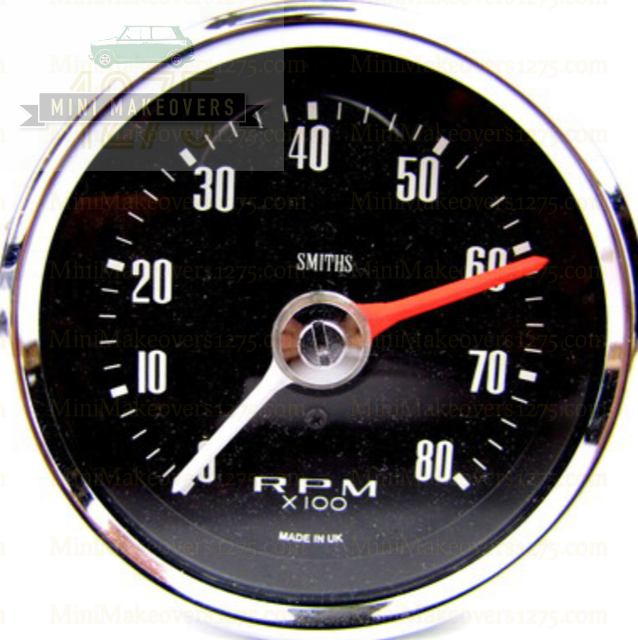The Significance of a Tachometer in Keeping An Eye On Engine Speed and Efficiency in Automotive Applications
In the realm of automobile design, the tachometer stands as a pivotal instrument in the motorist's toolbox, giving a direct home window into the internal functions of a car's engine. Beyond its feature as a mere scale of transformations per minute (RPM), the tachometer serves as a critical device for fanatics and specialists alike, offering real-time insights right into engine efficiency and wellness.
Relevance of Monitoring Engine RPM
Checking engine RPM, or transformations per minute, is a critical facet of vehicle maintenance and performance examination. Engine RPM directly associates with the speed at which the engine's crankshaft revolves, suggesting how swiftly the engine is running.
Additionally, monitoring engine RPM is necessary for performance examination in racing and high-performance automobiles. Maintaining optimum RPM levels is vital for achieving peak power outcome and acceleration. Racers commonly use tachometers to ensure they are running within the perfect RPM array for maximum performance. In recap, keeping track of engine RPM is not just important for identifying problems yet likewise for maximizing engine performance in different automotive applications.

Advantages of Real-Time Information
In automobile applications, real-time data plays a vital duty in giving instant insights into the performance and problem of the vehicle. By continuously monitoring various parameters such as engine speed, temperature, fuel consumption, and more, real-time data offers numerous advantages that add to boosted performance and security when driving.
Additionally, real-time information assists in performance optimization by giving instant responses on driving routines and engine efficiency. Motorists can adjust their actions in real-time based on this information to attain much better gas economic climate and lengthen the life expectancy of their lorry.

Furthermore, real-time information plays an important duty in contemporary auto diagnostics, allowing technicians to swiftly detect and deal with breakdowns. This results in lowered downtime, lower upkeep costs, and inevitably, enhanced overall automobile dependability and long life (tachometer). By taking advantage of the power of real-time data, auto stakeholders can make educated choices that positively impact both the performance and long life of the car
Influence On Equipment Shifts
Reliable equipment changes in automobile applications dramatically affect total efficiency and driving experience. The tachometer plays an essential function in enhancing gear shifts by offering real-time engine speed data to the chauffeur. When coming close to the redline on the tachometer, it indicates the vehicle click resources driver to upshift to prevent over-revving the engine and causing potential damage. On the other hand, downshifting at the right moment can help maintain the engine in its power band, ensuring responsive velocity when required.
Moreover, the tachometer help in attaining smoother equipment shifts, particularly in manual transmissions. By monitoring engine rate, motorists can carry out gear changes at the optimum RPM variety, decreasing jerking activities and decreasing endure the transmission components. This precision on duty modifications not only enhances driving convenience however also contributes to sustain effectiveness.
Enhancing Fuel Efficiency
Given the crucial role the tachometer plays in maximizing equipment changes for efficiency and engine wellness, it directly adds to making the most of gas effectiveness in automotive applications. By giving real-time comments on engine rate, the tachometer helps drivers in keeping the most reliable RPM range for gas economic climate. When vehicle drivers constantly monitor the tachometer and readjust their driving behaviors appropriately, they can stay clear of unnecessary gas consumption triggered by over-revving or lugging the engine.
In addition, the tachometer helps drivers identify the most fuel-efficient gear to be in at any given moment, avoiding the engine from working more difficult than required. In final thought, the tachometer serves as an important tool in enhancing fuel efficiency by promoting optimal driving habits and identifying locations for renovation in the lorry's efficiency.

Maximizing Engine Longevity
The tachometer's role in keeping an eye on engine speed and efficiency is instrumental in making certain the durability of auto engines. Keeping an eye on the tachometer allows motorists to stay within the advised RPM range for their automobile, avoiding unneeded stress on the engine and Continued extending its life expectancy.

Conclusion
In verdict, the tachometer plays a critical function in monitoring engine speed and efficiency in automobile applications. By providing real-time data on RPM, it enables effective equipment shifts, boosted fuel performance, and made best use of engine longevity. This device here are the findings is important for keeping optimal engine efficiency and ensuring the general capability of a car.
Comments on “Tachometer Acquiring Overview: Functions to Search For and Finest Brands”